Past and Present: The Gayety Theater, Williamsburg
A Look at Brooklyn, then and now. While Brooklyn did have a large and very popular theater district downtown, almost every neighborhood in Brooklyn also had a number of local theaters. Most of these theaters were built during the age of vaudeville, burlesque, and variety shows, and were affordable and fun entertainment for the average…

A Look at Brooklyn, then and now.
While Brooklyn did have a large and very popular theater district downtown, almost every neighborhood in Brooklyn also had a number of local theaters. Most of these theaters were built during the age of vaudeville, burlesque, and variety shows, and were affordable and fun entertainment for the average Brooklynite. Trolling through historic photographs of Brooklyn will often bring up a picture of a thriving theater, and the question “Where is that, and is it still there?” just has to be asked. Here’s another in that series.
The 1908 postcard on the left shows the Gayety Theater, at 22 Throop Avenue, located at the end of the present day junction called the Lindsay Triangle, where Throop, Middleton, and Broadway meet, in Williamsburg. The Gayety was one of many theaters of the same name that can be found from Baltimore to Chicago to Ontario. All opened near the turn of the century or a bit after, offering variety shows, and vaudeville. This one was no different.
The Gayety was owned and operated by Hyde & Behman, a Brooklyn based theater management company that grew to operate theaters in Brooklyn, Manhattan, Newark, Pittsburgh and Chicago. Richard Hyde and Louis Behman started their company in Brooklyn in 1877, with their first theater on Adams Street, in Downtown Brooklyn. This theater was built in 1892, and was designed by J.B. McElfatrick, a very successful and well-known theater designer, with quite a roster of Brooklyn buildings to his name. The house opened up on November 7, 1892 with a vaudeville act.
The theater faced Throop Avenue and Broadway, and had large cathedral glass doors leading to the lobby. The building was decorated in cream and terra-cotta, with garlands of flowers painted on the ceiling and a large painting of the Muses on the main curtain. The theater had 1820 seats, including balcony, orchestra, gallery, and box seats. The theater featured vaudeville and variety acts, the best known of which included Will Rogers, the avuncular “cowpuncher from the Western Plains”, who headlined in 1905. In 1910, the Three Keaton’s, appeared, starring a young and extremely talented young acrobat/comedian named Buster. He appeared with his parents, inventing the awkward, but charming character that would later make him a movie star.
By the ‘teens, the theater was well known as a high class burlesque house, one of Brooklyn’s first, and they also began to offer ethnic drama productions for a growing Yiddish theater audience, as well as a separate Italian audience. Williamsburg was well on its way in becoming Brooklyn’s largest Jewish community, with the opening of the Williamsburg Bridge earlier in the century. Both the Jewish and Italian communities came to Brooklyn from the overcrowded tenements of the Lower East Side, and settled in the greater Williamsburg area.
However, by the 1920’s, the theater was under new management, and the high class burlesque shows were replaced by something much more bawdy and risqué. The theater began to also offer movies, as well as burlesque shows, and ethnic dramas, but was almost shut down by the city inspectors for the lusty and busty content of the shows. They gave up, leaving the theater to the Yiddish and Italian dramas and the movies. But the dramas did not survive either, and they left, as well. A series of fires began to plague the theater, one in 1927, which drove patrons out into the streets, and almost destroyed the gallery, and another in 1930. This one destroyed part of the balcony area, and stopped traffic in the street, as fire fighters battled the blaze. Both were rather suspicious, and the theater closed for good in 1932.
In 1940, the theater was torn down. The Brooklyn Eagle speculated at the time that it would be replaced by an apartment building or a used car lot. I’m not sure what was there in the interim, as the records have been lost, but in 2005, this apartment building was built on the site of the old theater. The period photo shows Lindsay Square looking very different from the way it looks now. GMAP
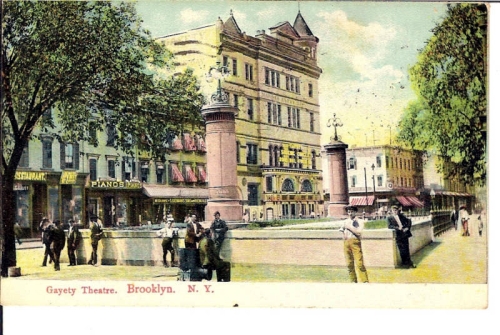
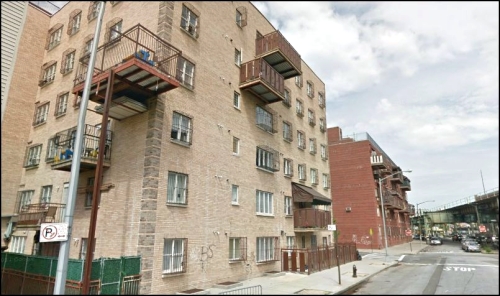

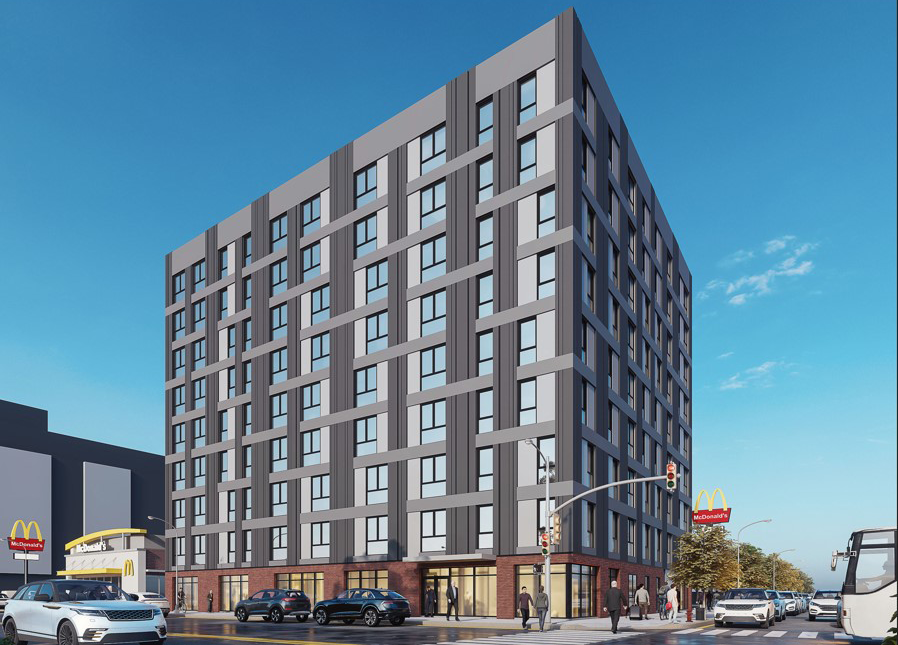
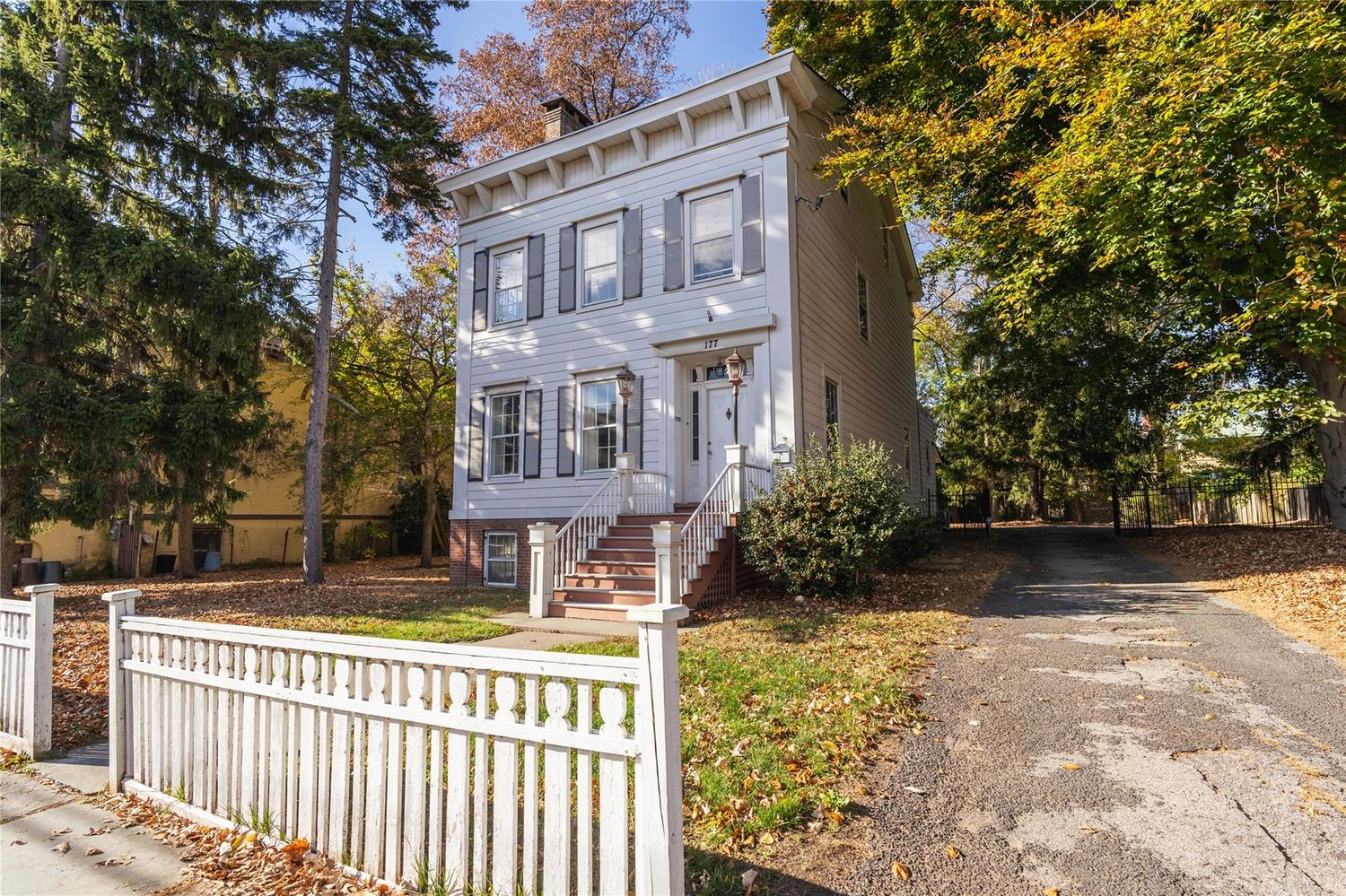
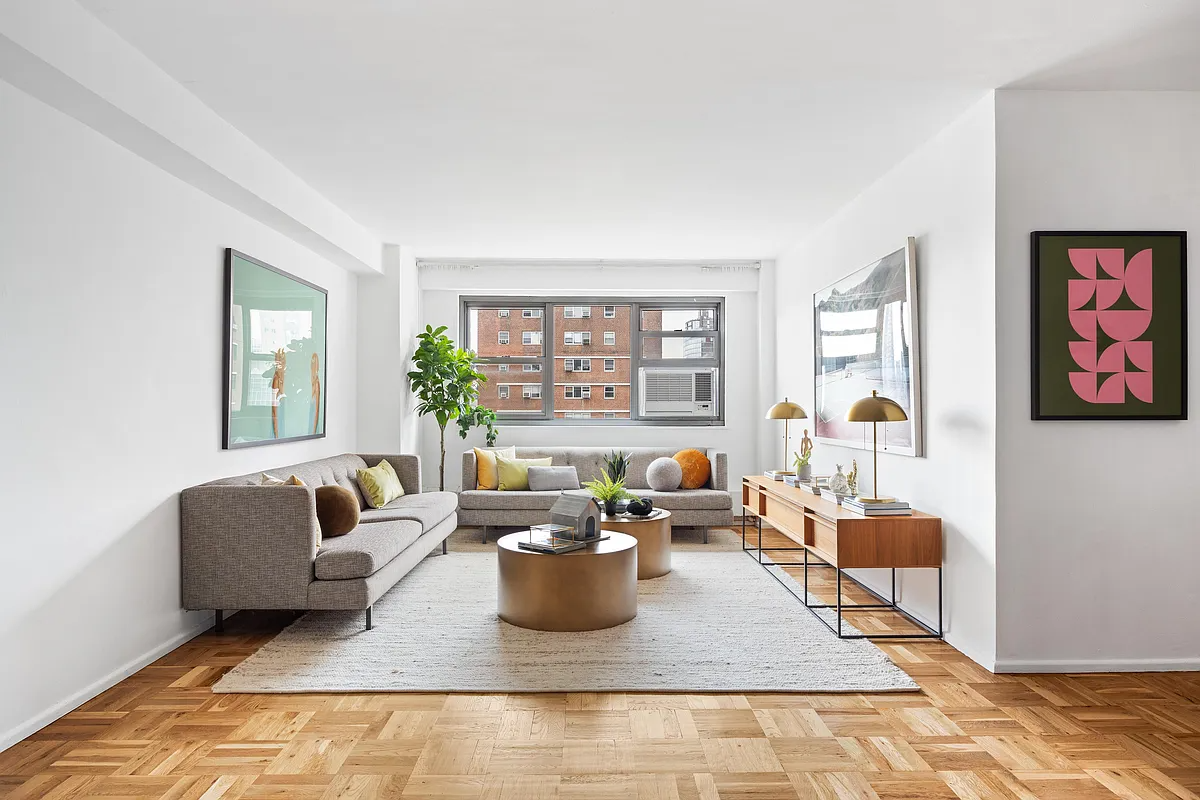



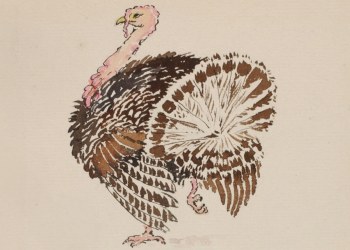
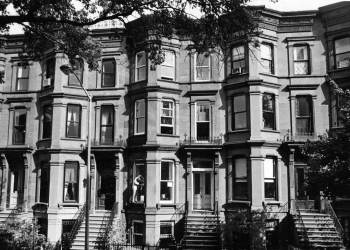
What's Your Take? Leave a Comment